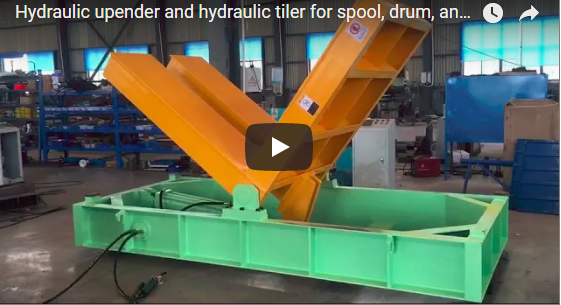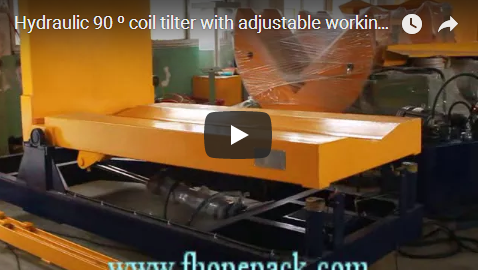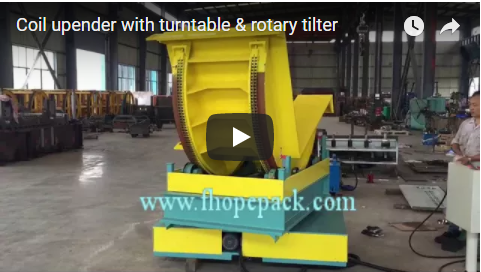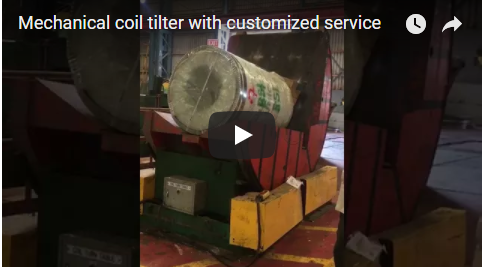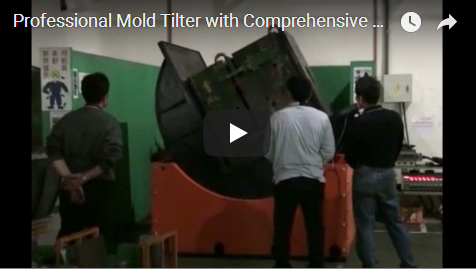How Do I Use a Coil Upender for Efficient Packaging?
I want to share my views on coil handling. I work at FHOPEPACK, where I focus on advanced packing machines. I see many systems with turnstiles, coil cars, and coil upenders. I study each part. I also watch how they connect. I appreciate the coil upender. It transforms heavy coils with care. I learn from these systems. I also test them. I see how they reduce labor. I see how they protect products. This is important. I wish to describe how coil upenders enhance a line. I use short sentences. I aim to clarify each detail. I remember my first encounter with a large coil. It was big. I thought it was impossible to move. Then I saw a coil upender in action. That changed my perspective. I realized there was a tool that lifts, tilts, and places coils. That was exciting. I want to explain that process. I hope my story can guide others. I want to share lessons from my background. I want to show how a coil upender can fit many packaging tasks. I also want to highlight the synergy of coil cars and turnstiles. Each device has a purpose. They can work as a team to improve efficiency. I like to keep things simple. I will break down each concept. I plan to describe daily uses. I will mention design. I will mention power. I will mention safety. I will also explain each step in the entire sequence.
I see big coils in factories. The turnstile often holds them. The coil car picks them up. The coil upender receives them. That is a typical flow. We typically watch the coil car approach. We watch the upender’s platform. The system lifts the coil. Then it rotates the coil 90 degrees. Then it sends it out on a conveyor table. This is normal. But how do I use a coil upender in a broader sense? I want to explore that. I notice many questions about coil handling. Some people wonder if it is safe. Others ask about installation. Others want to know how to connect these machines to their power. They also ask how to combine them with existing lines. My brand, FHOPEPACK, tries to share knowledge. We aim to help beginners. We hope to assist experts too. That is part of my mission. My experiences are based on on-site visits. I see clients who produce metal sheets, wire coils, or other coiled products. They want to reduce manual handling. They want to avoid injuries. They want consistent orientation. They want stable transfers. That is where a coil upender helps.
I also tested a coil upender on our own floor. I saw the coil car place a coil onto the upender’s platform. Then the upender’s mechanism activated. The platform tilted. The coil turned from horizontal to vertical. That was the magic. The coil was stable. The surface of the coil was protected. No damage happened. The upender completed its rotation. Then the coil left on a conveyor. That entire sequence felt smooth. I recognized that timing and motion were crucial. I realized that the upender design must handle the coil’s weight. If the coil weighs thousands of kilograms, the machine must remain rigid. No shaking, no tilting, except the planned tilt. That is part of good engineering.
Now, I want to dive deeper into the meaning of a coil upender. I also want to detail how you can integrate it into your line. I recall helping a customer who produces steel coils. That customer told me they used to rely on forklifts. They had forklift drivers who struggled with balancing the coils. They had accidents. They had product damage. When they switched to a coil upender, they saved time. They also made the workplace safer. I value these benefits.
Basics of a Coil Upender
A coil upender is a specialized machine. It is designed to rotate coils from one orientation to another. That is the fundamental task. I see it used in metalworking, wire production, sheet steel manufacturing, and many other fields. The coils can be large or small. The upender can handle different diameters. The main function is to prevent manual strain and to streamline movement. The coil upender typically has a sturdy steel frame. It includes a platform or cradle. That cradle can rotate around a pivot. The pivot is powered by hydraulics or electrics. When a coil is placed on the cradle, the upender slowly raises or lowers one side. Eventually, the coil moves from a horizontal axis to a vertical axis. The tilt might be 90 degrees, or sometimes 180 degrees, depending on the design.
I remember seeing an upender with a built-in conveyor table. That table allowed quick transfer. I also saw an upender with a clamp to hold the coil in place. That clamp prevents rolling. In some cases, the operator can control speed and angle. That helps if the coil is delicate. The user can set a gentler tilt. The user can add cushioning. The main advantage is that the coil upender does not require heavy lifting by staff. It also ensures repeatable positioning. Workers can do other tasks while the machine does the rotation. That helps with efficiency. It also reduces the chance of injuries. I see many shops that rely on overhead cranes. That can be risky, especially if workers walk under loads. The coil upender keeps everything at ground level. That lowers hazards. The upender’s design can also protect the coil edges. The cradle shape might match the coil’s dimensions. That helps avoid dents. That is the basic idea of a coil upender.
Integration with Turnstiles and Coil Cars
I want to describe how a coil upender can integrate with other equipment. A turnstile often holds multiple coils. It rotates around a central axis. That way, an operator can pick a specific coil to feed forward. The coil car is like a cart with rails or wheels. It can move under the coil. It can lift it with a hydraulic system. Then it transports the coil to the next station. In the reference video, the coil car takes the coil from the turnstile. Then it delivers the coil to the upender. The upender is prepared with a portable working platform. This is beneficial. The coil car can line up precisely. Then it loads the coil onto the cradle. The upender raises the coil. It turns it 90 degrees. That changes the coil’s orientation. Then the coil moves off via the conveyor table.
I see synergy in these machines. The turnstile organizes the coils. The coil car reduces manual handling. The upender finalizes the tilt. Each step is specialized. I remember a facility that tried to skip the coil car. They used a crane to pick up coils from a turnstile. The crane lowered the coils onto the upender. That caused extra steps. It also introduced overhead lifts. That can be more dangerous. The coil car solution was more straightforward. The line became safer. The forklift was no longer needed. This system is designed for speed. I see many lines that produce or process 30 to 50 coils per shift. They do not want idle time. The coil upender is a key piece. It orients the coil quickly. Then the line can move on to wrapping, labeling, or palletizing. This approach lowers the chance of collisions. It also reduces the cost of labor. That is how these pieces fit together.
Personal Observations on Coil Upender Safety and Maintenance
I want to address safety. I have seen many factories. I watch how operators interact with large machines. I worry about heavy loads. I have also heard stories of injuries caused by mishandling coils. That is why I emphasize safety measures. A coil upender is one step in a safe workflow. It removes the need to tilt coils by hand or forklift. It has rails or guides. It has sensors or limit switches. These ensure that the coil does not shift unexpectedly. The operator can stand at a safe distance. The control panel might have an emergency stop. The coil is usually locked in place with mechanical arms or friction surfaces.
I also watch out for maintenance. The upender has moving parts. If the drive is hydraulic, there are hoses, pistons, and fluid reservoirs. If the drive is electric, there might be gear motors, chains, or belts. Either way, lubrication is crucial. Regular checks help prevent leaks or worn components. Proper cleaning is also important, especially if the coil has debris. Sometimes, the coil has oil or rust. That might accumulate on the machine. I suggest a daily inspection routine. The operator can check for loose bolts or signs of wear. I also recommend a monthly or quarterly deeper check. That might involve replacing seals or verifying the alignment of pivot points. I recall one client who ignored maintenance. Their coil upender started to vibrate under load. That caused problems. Once they introduced a maintenance plan, the upender returned to smooth operation. Hence, I see maintenance as a key factor in a long-lasting coil upender.
How Does a Coil Upender Improve My Packaging Flow?
I often ask myself: how does a coil upender improve my packaging flow? I see that it eliminates manual tilting. That alone saves time. I also see it reduces forklift usage in some settings. Operators do not have to risk coil drops or forklift collisions. The coil upender centralizes the tilt action. The line can be designed around it. The coil upender can feed a wrapping station. The coil can be oriented for strapping. The coil can be turned for labeling. This is useful for coil products that need consistent orientation. That might be important for visual inspection or for branding.
I also notice that a coil upender helps with throughput. If I want to process many coils, I need a quick tilt. I do not want a slow or manual process. The coil upender can accomplish that tilt in seconds or minutes, depending on size. This is crucial if the line has to keep pace with upstream or downstream machines. The coil car can move the next coil in place while the upender works. The turnstile can rotate another coil into position. Everything flows in harmony. That is how a packaging line stays efficient. I also think about damage prevention. Coils can be scuffed or dented if handled roughly. The coil upender’s cradle often has padding or shaped supports. That helps protect the coil edges. The tilt angle can be controlled. The speed can be moderate. The coil can remain stable. That means fewer rejects. That means less rework. These factors add up. Over time, a coil upender helps me maintain product integrity and keep the line productive.
I recall a personal story. I once visited a site that handled high-value steel coils. They had surface coatings that were easy to scratch. They needed a gentle approach. I saw them place foam padding on the cradle. They also installed sensors to detect coil position. The coil upender performed well. It lifted each coil and rotated it without scratching. That was impressive. I realized that configuration matters. The upender can be customized. One can adjust cradle dimensions. One can add conveyors. One can choose a certain drive system. Each choice must match the coil’s weight and shape. That is how a coil upender can fit many scenarios. It is not one-size-fits-all. That is also why we at FHOPEPACK try to share details. We want users to pick the right machine for their coil.
I want to point out that a coil upender is part of a bigger puzzle. We might have an uncoiler or a decoiler at the next stage. We might have a wrapper or a palletizing station. The upender is a link in the chain. Each step can be automated. Each step can be integrated with sensors and controllers. We can track the coil through every stage. We can reduce human intervention. That is how modern factories improve safety and efficiency. I see that progress everywhere. I think it is exciting.
Conclusion
I believe the coil upender is a core element of a well-structured packaging and handling line. I hope this breakdown helps you see why. I also hope it inspires you to explore ways to combine the coil upender with a coil car, a turnstile, or other solutions. I know that each line is unique. Yet the general concept remains the same: let the machine do the heavy lifting. Let the machine manage orientation. That frees us to focus on quality control and other tasks. At FHOPEPACK, I love sharing knowledge. I enjoy helping others find the right approach. Thank you for reading my reflections on the coil upender. I trust this information can guide you in your work.

